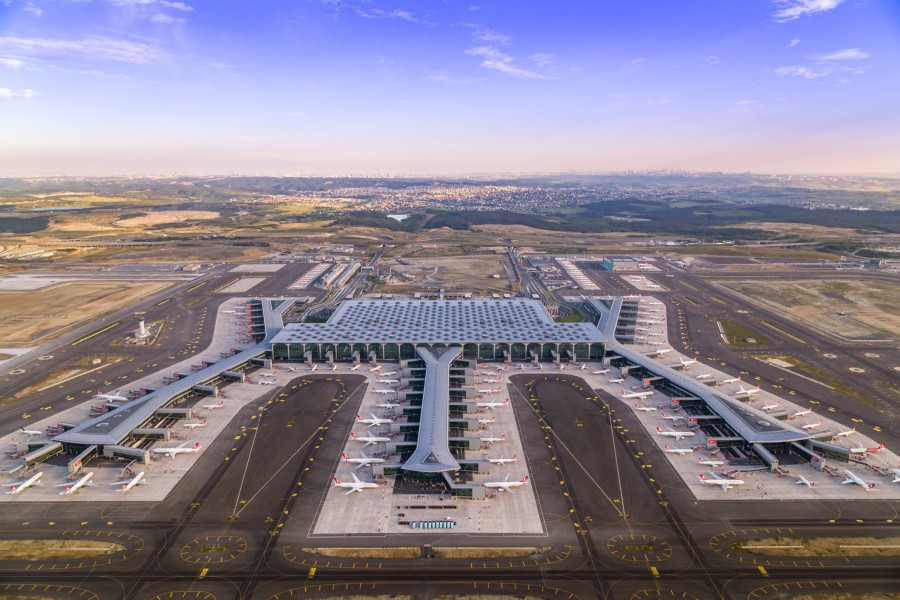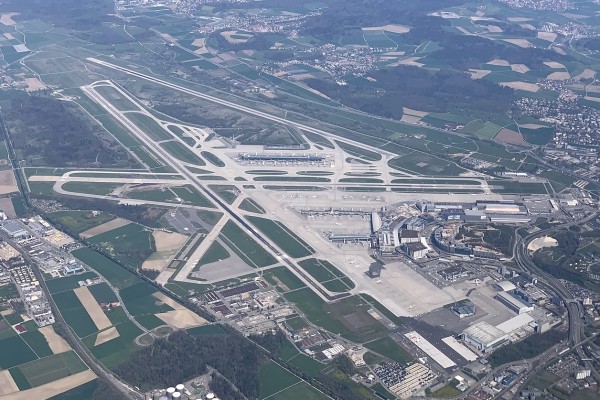- Airline
- 1 year before
Istanbul Airport's Fascinating Journey
Istanbul Airport, opened in 2018, blends modern with traditional architecture, establishing itself as a key bridge between Asia and Europe. Discover more
-

- 1 year before
- Category: Airline

Istanbul Airport: A Symbol of Modern Turkey
Airport History and Construction
Inaugurated on October 29, 2018, Istanbul Airport is a testament to Turkey's ambitious infrastructure projects. Strategically positioned at the crossroads of Asia and Europe, the airport serves as a vital bridge between continents. The challenges and criticisms faced during its construction underscore the significance of the project, which embodies not only a physical structure but also a symbol of national achievement.
Architecture and Design
Istanbul Airport's architecture seamlessly blends modern and traditional elements. Sprawling across an area of 76.5 million square meters, this colossal structure captivates with its striking design and expansive interiors. Intricate details of Turkish architecture harmoniously intertwine with cutting-edge technology, offering passengers an immersive and functional experience. The state-of-the-art Baggage Handling System, implemented by Vanderlande, enhances operational efficiency and ensures a smooth passenger journey.
Transportation and Access
Istanbul Airport is conveniently located within easy reach of the city center. Its comprehensive transportation network makes it an accessible destination for domestic and international travelers alike. The airport's strategic positioning welcomes visitors from Turkey and beyond.
Technical Capacity and Operations
Equipped with five runways, Istanbul Airport possesses the capacity to accommodate substantial and heavy flight traffic. Notably, three of these runways operate independently in parallel, making the airport one of the few in Europe with this capability. This 50% increase in airside capacity elevates Istanbul Airport beyond a mere transportation hub and establishes it as a global flight hub.
Features Distinguishing It from Other Airports
A defining characteristic of Istanbul Airport is its modular design concept. Constructed as one of the world's largest airports, this structure sets itself apart with both its technological infrastructure and its focus on passenger experience. Comfort and safety are paramount, while environmentally friendly practices and energy efficiency are prioritized. These attributes transform Istanbul Airport into more than just a transportation point; it becomes a cultural and technological destination.
Sustainability and Eco-Friendly Approaches
Istanbul Airport takes a leadership role in sustainability and eco-friendly initiatives. The materials and energy systems employed in its construction aim to minimize environmental impact. Furthermore, significant efforts have been made to reduce the carbon footprint of airport operations. These approaches demonstrate that the airport is not merely a transport hub but also an environmentally conscious entity.
For more informative content on aviation, please visit our website.




